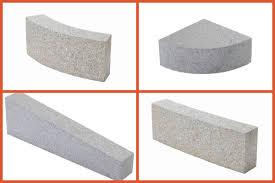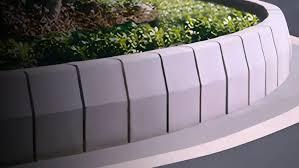




Table of Contents
- Introduction
- Importance in Construction and Landscaping
- Types of Kerb Stones
- Uses of Kerb Stones
- Advantages of Kerb Stones
- Conclusion
- Faq's
Introduction
Kerb stones, also known as curb stones, are essential components of both urban infrastructure and landscape design. These pre-cast concrete, granite, or other durable material blocks are strategically placed along the edges of roads, pavements, and gardens to serve a variety of crucial functions. From defining boundaries and enhancing safety to improving aesthetics and managing water runoff, kerb stones play a vital role in shaping our environment. This comprehensive guide delves into the different types of kerb stones, their varied uses, and the numerous advantages they offer.
Importance in Construction and Landscaping
Kerb stones are pivotal in defining boundaries and providing stability in various construction projects. In landscaping, they contribute to drainage solutions, prevent soil erosion, and enhance visual continuity in garden layouts. Their versatility makes them a popular choice for both urban and rural settings.
Types of Kerb Stones
Kerb stones are available in various shapes, sizes, and materials to suit different applications. The most common types include:
- Bullnose Kerb: Features a rounded top edge for a smooth, pedestrian-friendly finish. Often used in areas with high pedestrian traffic, such as sidewalks and shopping streets.
- Square Kerb: Has a sharp, square edge, providing a more defined and robust boundary. Suitable for areas where a strong visual separation is required, such as road edges and industrial sites.
- Channel Kerb: Incorporates a channel or gutter along its length to facilitate water drainage. Ideal for areas prone to flooding or where effective water management is crucial.
- Extruded Kerb (Slipformed Kerb): Formed on-site using a slipform machine, creating a continuous, seamless kerb. Offers flexibility in design and can be adapted to specific site requirements.
- Granite Kerb: Made from durable granite stone, offering high strength and a natural aesthetic. Often used in high-end landscaping projects and areas requiring a premium finish.
- Concrete Kerb: The most common type, made from pre-cast concrete. Offers a balance of durability, affordability, and versatility.
 Types of kerb stones,Rachana Stones
Types of kerb stones,Rachana Stones
Uses of Kerb Stones
- Road Edging: Defining the edges of roads, highways, and pavements.
- Sidewalk Construction: Creating a barrier between pedestrian walkways and roadways.
- Traffic Islands: Forming raised islands to separate traffic lanes and protect pedestrians.
- Roundabouts: Defining the central island and directing traffic flow in roundabouts.
- Driveway Edging: Creating a neat and defined edge for driveways.
- Garden Borders: Separating lawns, flowerbeds, and other garden features.
- Parking Areas: Defining parking spaces and preventing vehicles from encroaching on sidewalks.
- Water Drainage: Directing rainwater runoff and preventing flooding.
 Uses of Kerb Stones,Qcon
Uses of Kerb Stones,Qcon
Advantages of Kerb Stones
- Enhanced Safety: Improves road safety by separating traffic and pedestrians.
- Defined Boundaries: Creates clear and defined edges for roads, pavements, and gardens.
- Improved Aesthetics: Enhances the visual appeal of urban and rural environments.
- Water Management: Facilitates drainage and prevents flooding.
- Erosion Control: Protects the edges of pavements and roads from erosion.
- Durability: Made from durable materials, ensuring long-lasting performance.
- Low Maintenance: Requires minimal maintenance.
- Traffic Calming: Can be used as traffic calming measures
Conclusion
Kerb stones are integral elements in both construction and landscaping, providing essential functions that contribute to safety, functionality, and aesthetics. Understanding the different types of kerb stones, their specific uses, and their numerous advantages allows for informed decision-making in infrastructure development and landscape design. Whether you're constructing a road, designing a garden, or managing water runoff, kerb stones are a valuable and versatile solution.
explore further
Latest from Contemporary ideas
More from Innovations
Resources
Dwello, for every home buyer, is a way to go from 'I feel' to 'I know', at no extra cost.



